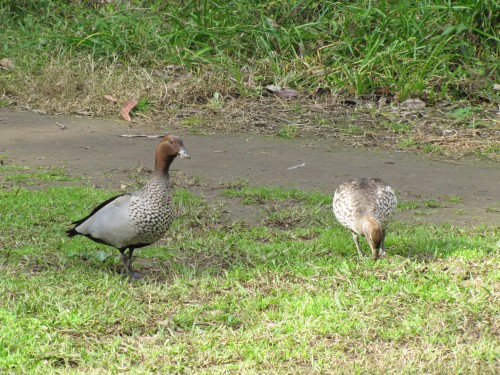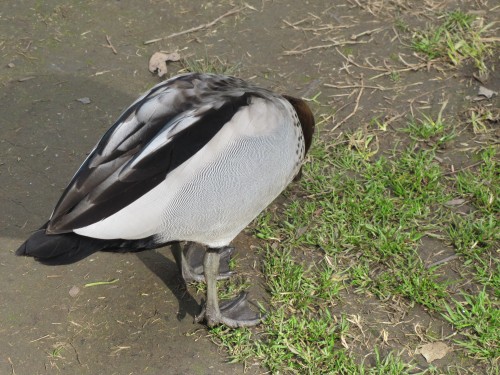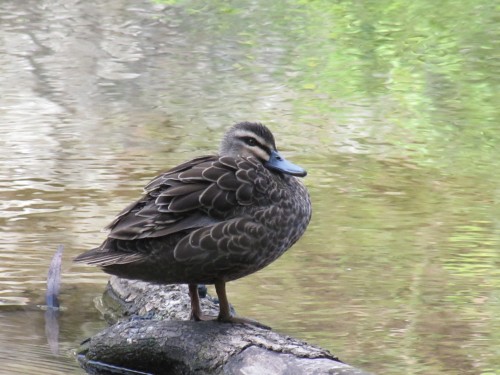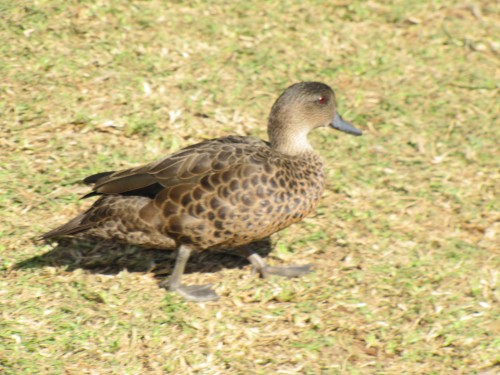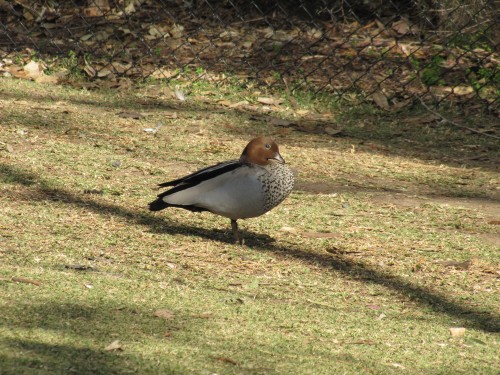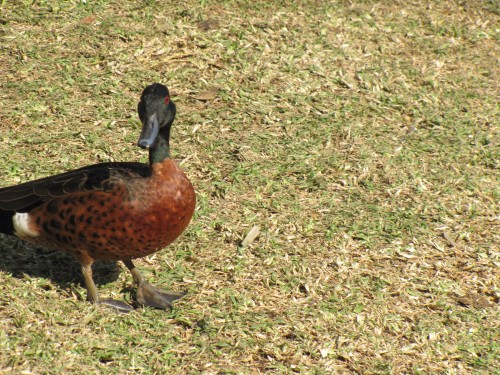Ducks in the Lane Cove National Park
The Lane Cove National Park in Sydney has the Lane Cove River flowing through it. Many areas near the banks of the river have been cleared of vegetation to accommodate ovals, picnic grounds and parking space for the many visitors who frequent the park daily. The water and the picnic areas naturally attract a range of ducks.
On our visit a few months ago I only recorded two species: Australian Wood Ducks and Pacific Black Ducks. The photo above shows the male on the left and the female on the right. The photo shows – in part – the big differences in the plumage between the male and female. The photo below shows some of the fine markings on the male bird.
Today’s last photo is of a Pacific Black Duck, one of our most common ducks.
Ducks at the Australian Reptile Park
On our recent visit to the Australian Reptile Park near Gosford north of Sydney, I was constantly on the lookout for birds that I could photograph. When most people were having lunch in the park picnic area – which was very nice, by the way – I noticed that there were quite a few ducks also present.
This is a familiar sight in Australia; where people gather to eat, many bird species, including ducks, tend to gather. Unfortunately many people also feed the birds, ignorant of the fact that human food is not only unsuitable for our native species, too much can also be deadly to the birds’ health.
Of the prominent ducks present, I photographed three species in the picnic area: Grey Teal, Chestnut Teal and Australian Wood Duck. Also present nearby were a few Pacific Black Ducks, but I decided not to photograph those as I have plenty of shots of that species already.
Wandering Whistling-duck
I have never seen a Wandering Whistling-duck in the natural environment. Sadly, I’ve never been to areas where this species lives in the wild, namely northern Western Australia, Northern Territory and eastern Queensland. One day I’ll get there – but not yet.
Instead, I have to content myself to seeing this species in captivity, such as the bird shown in the photo above, taken recently in the walk through aviary at Adelaide Zoo.
We have two whistling-duck species in Australia, the other being the Plumed Whistling-duck. They get their name from their whistling call, usually when in flight.
Their preferred habitats include lakes and swamps, flooded grasslands, the edges of rivers and dams.
Further reading:
Pacific Black Ducklings pay us a visit
A few weeks ago I wrote about a pair of Pacific Black Ducks mating in our swimming pool. We have been waiting expectantly ever since for the arrival of a little band of ducklings. They usually head for our swimming pool, and then can’t get out again.
This has happened every year now for about 6 or 7 years. It’s possibly the same pair each year. Despite thorough searches we have been unable to locate the actual nest on every occasion. One of the problems they face is once they get into the pool, they are unable to get out. Very soon they can die of either hypothermia or drown (because their feathers are not yet water repellent).
To cater for this problem we have made a wooden framed ramp covered with wire netting. We usually throw an old towel over the netting and it doesn’t take the ducklings long to find out that this is a way out of the water.
This year it was a little different. Mother duck headed off across our small paddock with four ducklings in tow. One poor little fellow missed the on ramp and swam under it, causing him to be separated from his siblings. Trevor came to the rescue. While my wife watched the family movements I managed to scoop up the lost baby and then run after the mother and the other ducklings carrying the almost abandoned duckling. Soon they were reunited and on their way.
Not sure if they headed for the River Murray some 4 kilometres away, or stopped over at a storm water drainage dam about a kilometre over the paddock.
With all the excitement of the rescue attempt, I didn’t get a photo!
